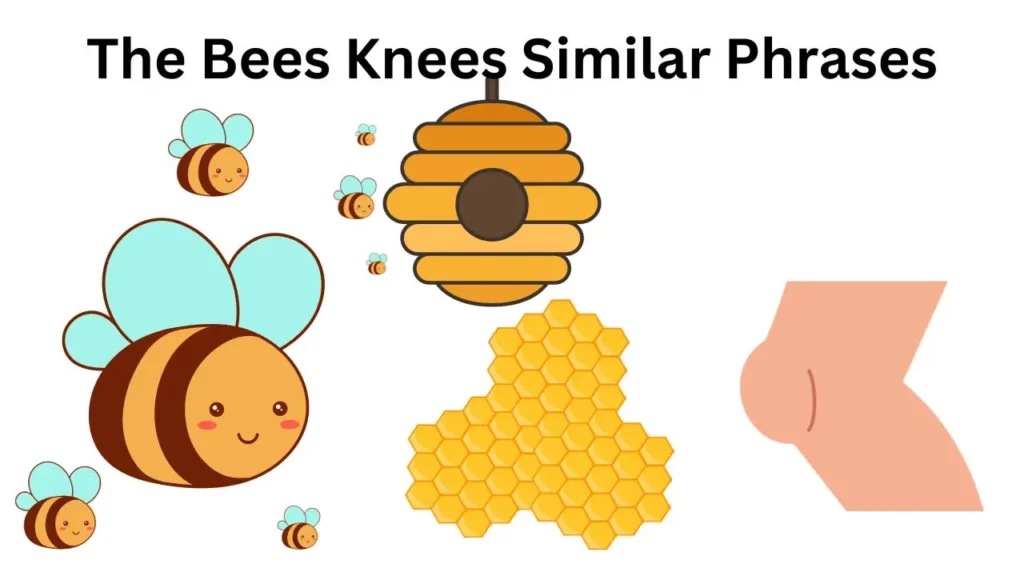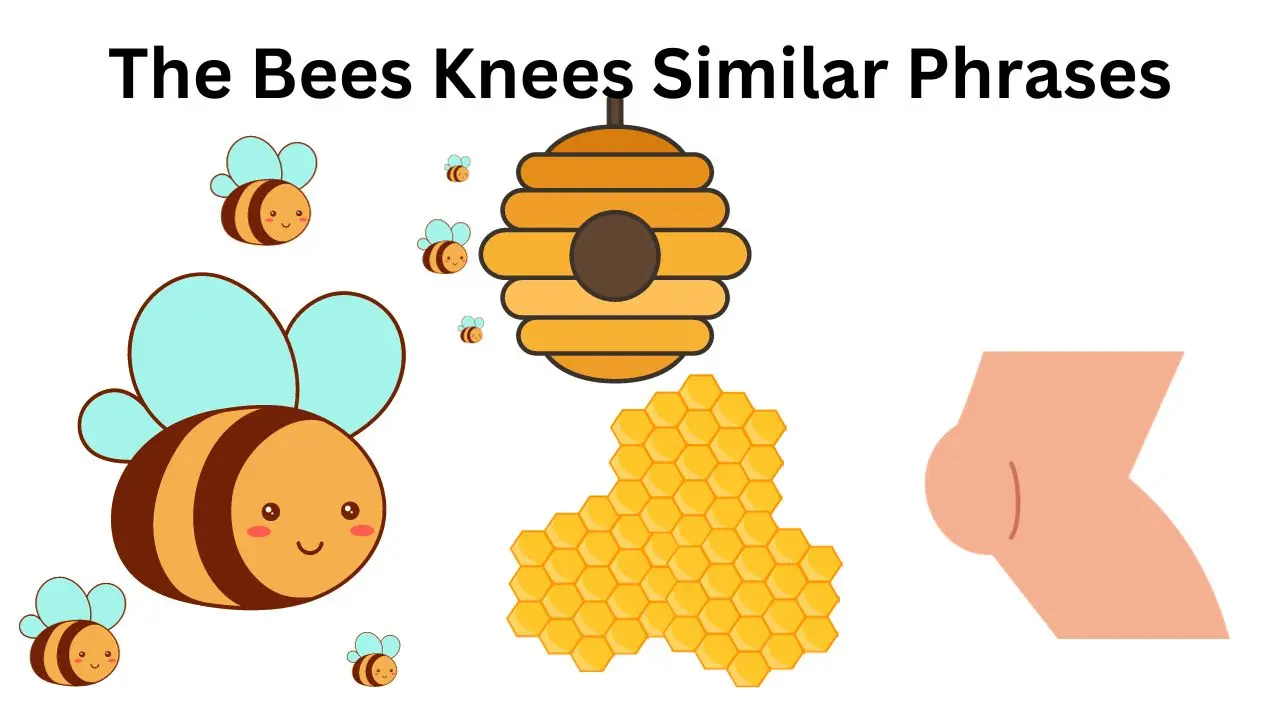In the vast landscape of the English language, idioms and phrases add a splash of color and flair to our everyday conversations. One such idiom that has intrigued many is “The Bees Knees Similar Phrases.” This article aims to explore this unique phrase, its counterparts, and the captivating stories behind their origins.

- The cat’s pajamas – Something outstanding or excellent.
- The dog’s bollocks – The best of the best; something of the highest quality.
- The cat’s meow – Something highly impressive or stylish.
- The top banana – The person in charge; the leader.
- The cream of the crop – The best of a group or selection.
- The duck’s quack – Something excellent or top-notch.
- The elephant’s instep – An exceptional or remarkable quality.
- The real McCoy – Something that is genuine or authentic.
- The bee’s elbows – Something very good or impressive.
- The bee’s whiskers – Something fantastic or remarkable.
- The snake’s hips – A way of expressing something excellent or stylish.
- The canary’s tusks – Something extraordinary or outstanding.
- The eel’s ankle – A humorous way to describe something as fantastic.
- The tiger’s spots – Something highly impressive or unique.
- The gnat’s elbow – Something exceptionally small or insignificant.
- The clam’s garter – Something of great quality or value.
- The owl’s boots – Something exceptionally good or noteworthy.
- The swan’s down – Something very elegant or refined.
- The rooster’s crow – Something remarkable or outstanding.
- The lobster’s vest – Something impressive or top-notch.
Alternatives Of The Bees Knees Similar Phrases
- The cat’s whiskers
- The top of the heap
- The cream of the cream
- The pick of the litter
- The pearl of great price
- The gold standard
- The crème de la crème
- The jewel in the crown
- The cream of the top
- The finest hour
- The ace in the hole
- The apple of one’s eye
- The icing on the cake
- The star of the show
- The best thing since sliced bread
- The ne plus ultra
- The zenith of perfection
- The epitome of excellence
- The pièce de résistance
- The kingpin
Unveiling “The Bees Knees”
“The Bees Knees” is a peculiar expression that has graced the English lexicon for generations. Often used to describe something exceptional, outstanding, or of the highest quality, it has piqued curiosity due to its seemingly unrelated components. Let’s delve into the history of this phrase.
A Glimpse into History
Believe it or not, “The Bees Knees” emerged during the Roaring Twenties, a decade renowned for its extravagant language and fashion. This phrase reflects the spirit of that era, where people aimed to stand out and be the best in every way. It signifies excellence, similar to phrases like “the cat’s pajamas” and “the cat’s meow,” which also had their origins in this period.
Expressions Beyond Bees
As the English language evolved, so did idiomatic expressions. Today, “The Bees Knees” has close relatives in the form of various phrases that convey a similar meaning. These phrases, though less popular, are equally intriguing. Let’s explore some of them.
- The Cat’s Whiskers: Like “The Bees Knees,” this phrase from the 1920s signifies excellence, typically related to fashion or personal style. Cats have always been associated with grace and elegance, which makes this idiom charmingly fitting.
- The Dog’s Bollocks: A bit more crass but equally expressive, this British phrase is used to describe something outstanding. Its origin, however, is quite unusual and may not be suitable for all audiences.
- The Elephant’s Instep: A more whimsical choice, this phrase is used humorously to describe something superb. Its absurdity adds a touch of humor to the conversation.
- The Monkey’s Eyebrow: While not as commonly used, this phrase also denotes excellence, and its sheer oddity makes it memorable.
- The Flea’s Eyelash: Another quirky expression, this phrase emphasizes the tiny yet significant aspects of excellence, just like a flea’s eyelash.
What Makes These Phrases Tick?
So, what’s the magic behind these phrases? Why do we use such peculiar animal-related idioms to describe excellence? The answer lies in the charm of figurative language. By comparing something exceptional to a part of an animal, these phrases evoke vivid imagery and capture attention. They also make language more engaging and colorful.
The Evolution of Language
Language is a dynamic entity, constantly evolving to reflect cultural changes and societal shifts. Expressions like “The Bees Knees” are reminders of bygone eras, offering a glimpse into the linguistic trends and societal values of the time.
Final Thoughts
“The Bees Knees” is merely the tip of the iceberg in the realm of idioms. Its analogues, such as “The Cat’s Whiskers” and “The Dog’s Bollocks,” showcase the rich, whimsical, and unusual language tapestry. These expressions are more than just linguistic curiosities; they are enduring cultural artifacts.
The next time you want to explain something extraordinary, give your speech a little charm and humor by inserting one of these odd expressions. Why settle for ordinary when “The Bees Knees” and its unusual relatives are available to illustrate your point?
